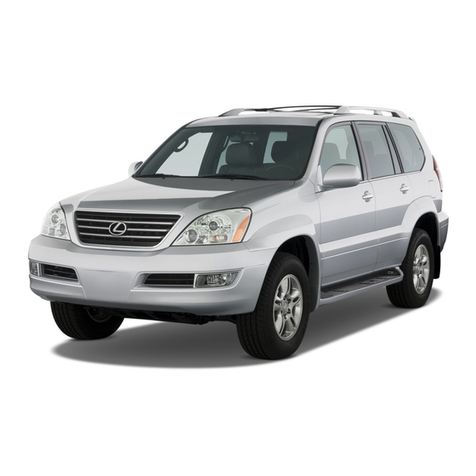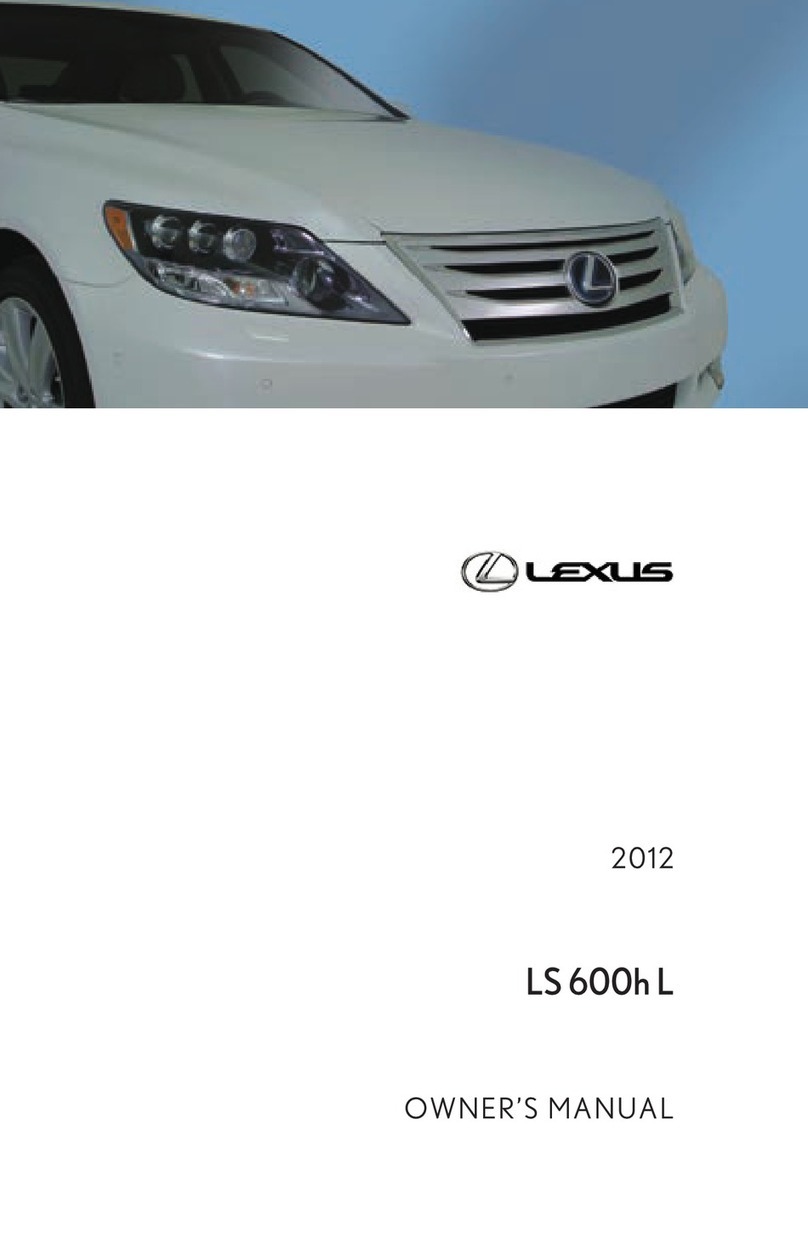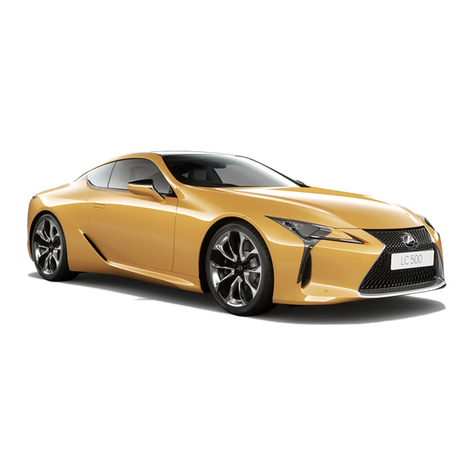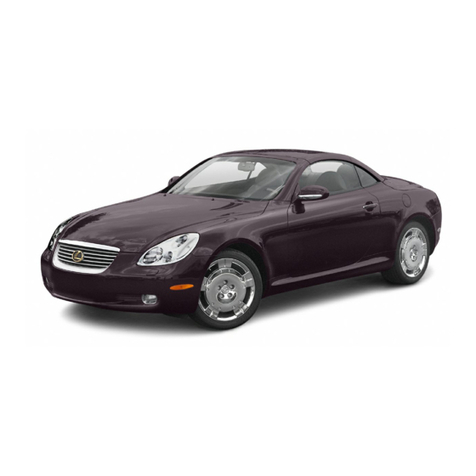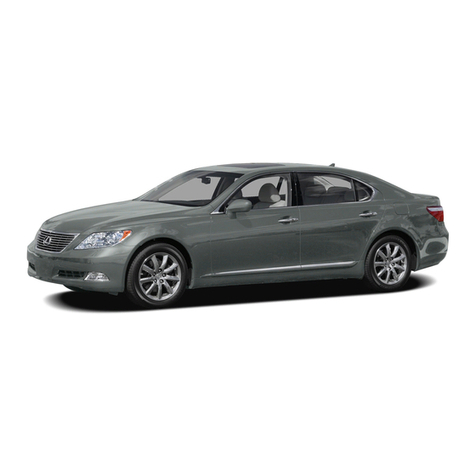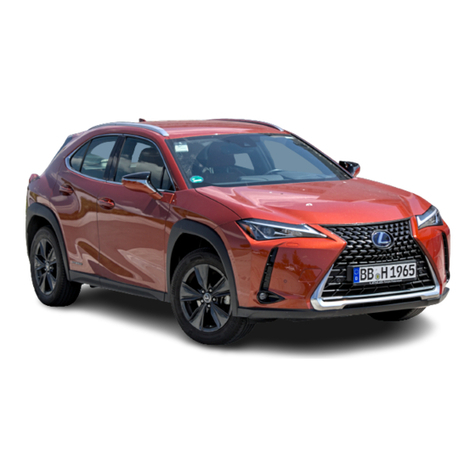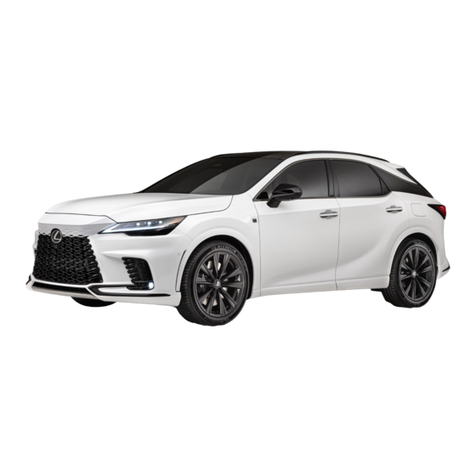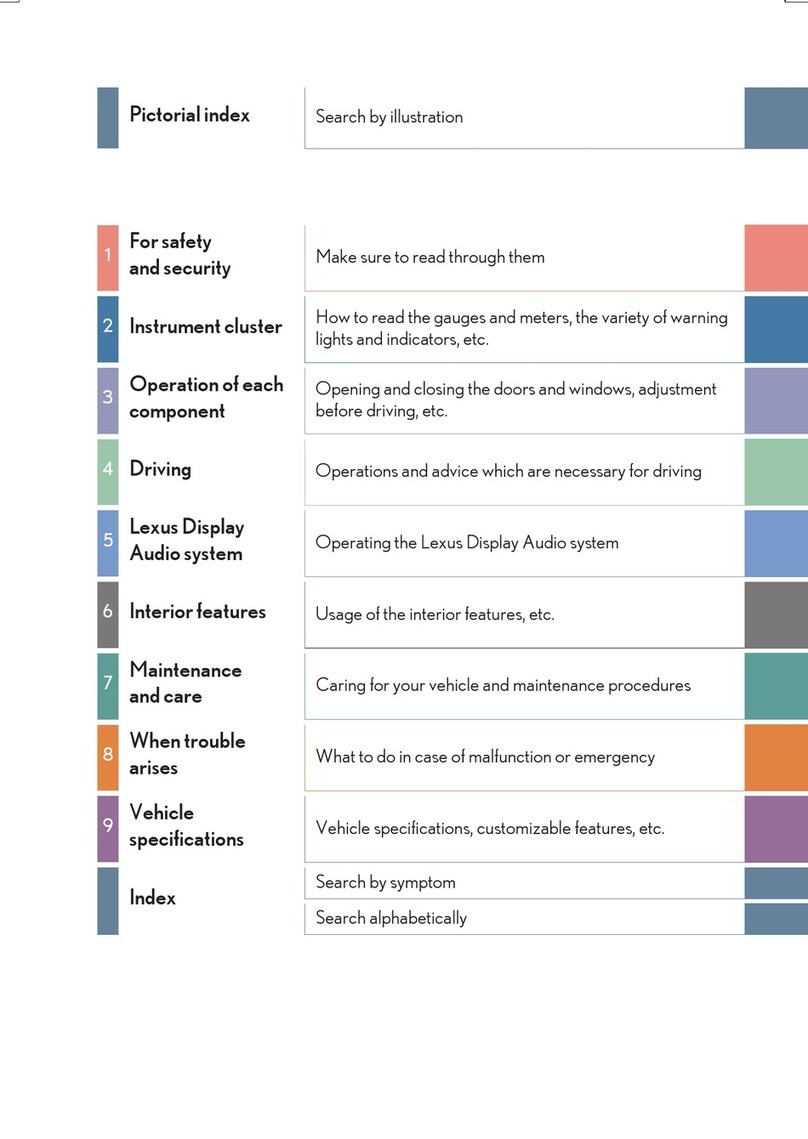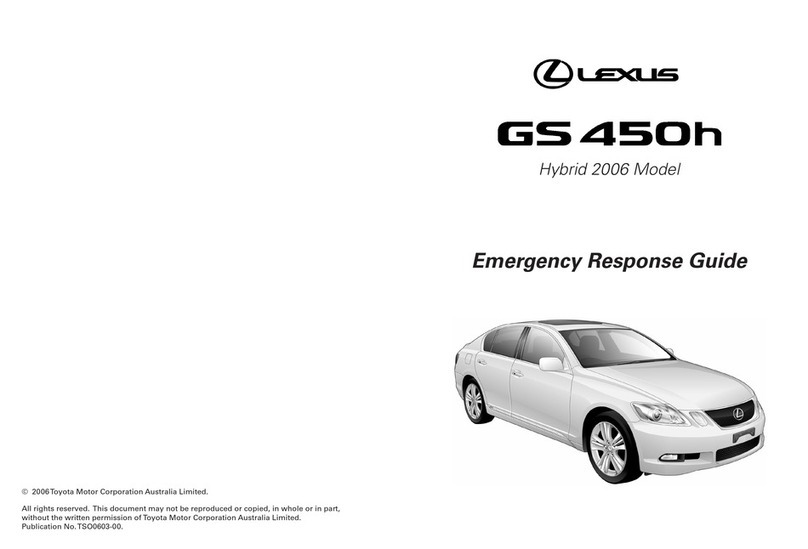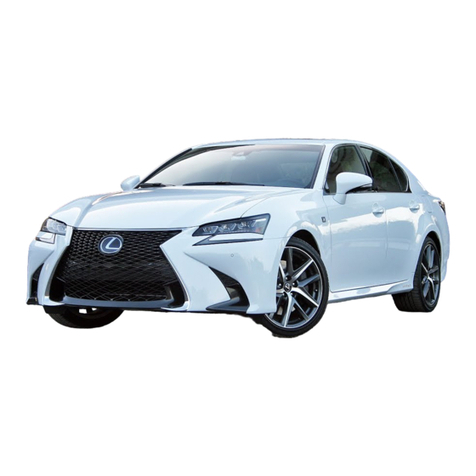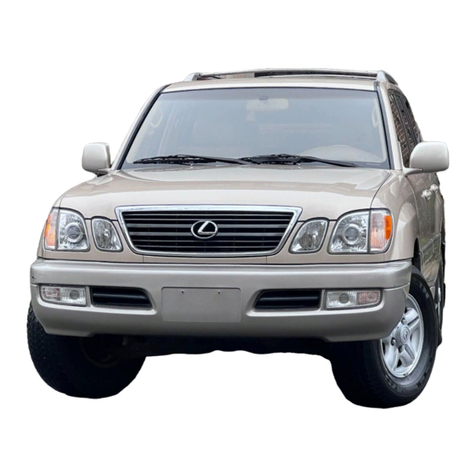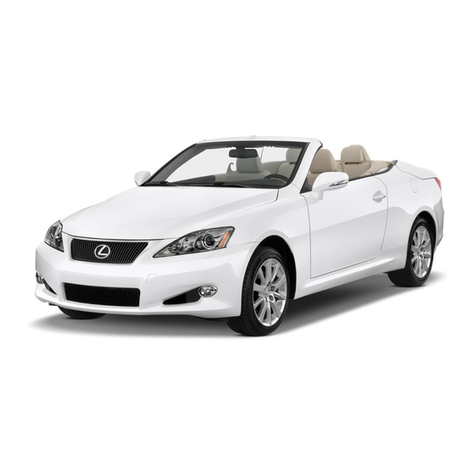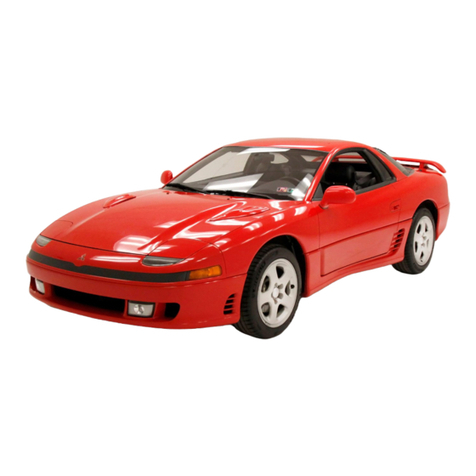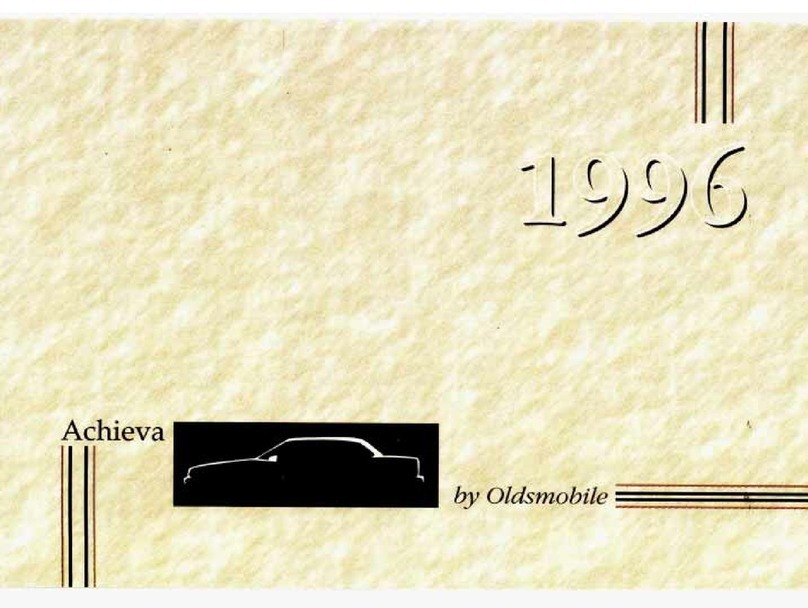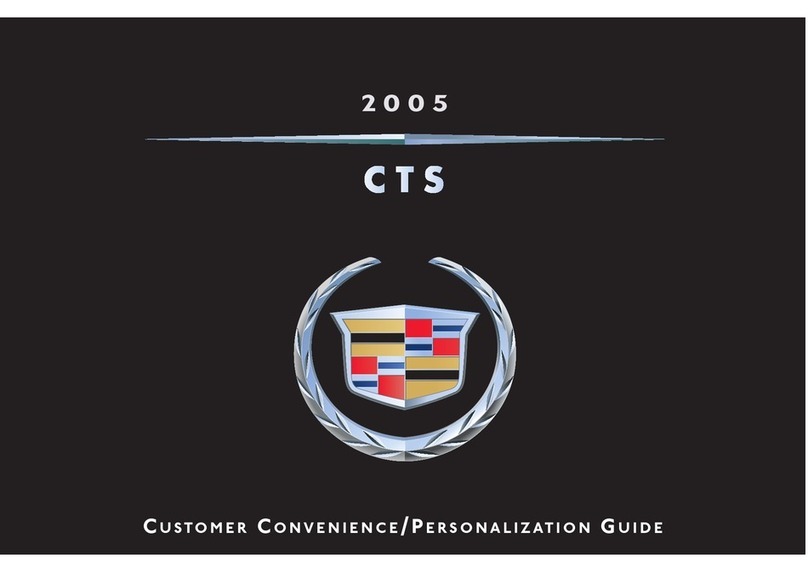i
FOREWORD
In October 2006, Lexus released the Lexus
RX400h petrol-electric hybrid vehicle in
Australia. Except where noted in this guide,
basic vehicle systems and features for the
RX400h are the same as those on the
conventional, non-hybrid, Lexus RX330/350.
To educate and assist emergency responders in
the safe handling of the RX400h hybrid
technology, Lexus published this RX400h
Emergency Response Guide.
High voltage electricity powers the electric
motors, generator, inverter/converter, and
power steering. All other automotive electrical
devices such as the headlights, radio, and
gauges are powered from a separate 12-Volt
battery. Numerous safeguards have been
designed into the RX400h to help ensure the
high voltage, approximately 288-Volt, Nickel
Metal Hydride (NiMH) Hybrid Vehicle (HV)
battery pack is kept safe and secure in an
accident.
The RX400h utilises the following electrical
systems:
• Maximum 650-Volts AC
• Nominal 288-Volts DC
• Nominal 42-Volts DC
• Nominal 12-Volts DC
RX400h Features:
• Adoption of Hybrid Synergy Drive as the
name for the Lexus Petrol - Electric
Hybrid System.
•Hybrid Synergy Drive includes a boost
converter in the inverter assembly that
boosts to 650-Volts the available voltage
to the electric motors.
• The high voltage hybrid vehicle
battery pack rated at 288-Volts.
• A high voltage electric motor driven
air conditioning compressor rated
at 288-Volts.
• A high voltage Electric Power Steering (EPS)
assist motor rated at 42-Volts.
• Body electrical system rated at 12-Volts
negative chassis ground.
• RX400h is only availbale in Australia as a
four wheel drive (4WD).
• 4WD models include an additional 650-Volt
electric motor to drive the rear wheels.
• Supplemental Restraint System (SRS) - dual
stage frontal airbags, driver knee airbag,
front seat mounted side airbags, side curtain
airbags, and front seat belt pretensioners.
High voltage electrical safety is an important
factor in the emergency handling of the
RX400h Hybrid Synergy Drive system. It is
important to recognise and understand the
disabling procedures and warnings throughout
the guide.
Additional topics contained in the guide
include:
• Lexus RX400h identification.
• Major Hybrid Synergy Drive component
locations and descriptions.
• Extrication, fire, recovery, and additional
emergency response information.
• Roadside assistance information.
By following the information in this guide,
emergency responders should be able to safely
perform a rescue involving the Lexus RX400h
hybrid vehicle.
2006 RX400h
